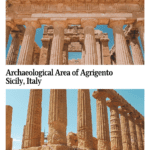Archaeological Area of Agrigento
by Samantha
What is the Archaelogical Area of Agrigento?
The Valley of the Temples in Agrigento is among the most impressive of all the Greek ruins in Sicily and a top sight for anyone visiting the island.
Disclosure: This article contains affiliate links. Making a purchase through an affiliate link will mean a small commission for this website. This will not affect your price.
The small coastal town of Agrigento was once a thriving ancient Greek city in the 5th century BC, known as Akragas. In fact, it was the third largest city in the Greek world after Athens and nearby Siracusa on Sicily’s eastern coast.
Built upon a high ridge overlooking the sea stands an incredible ensemble of ancient Greek temple ruins which, along with a fine antiquities museum, make up the Archeological Area known as the Valley of the Temples or Valle dei Templi in Italian.
The Valley of the Temples includes ruins of eight temples, two necropoli, two sanctuaries, Theron’s tomb, a gymnasium, a theater, and more assorted structures.
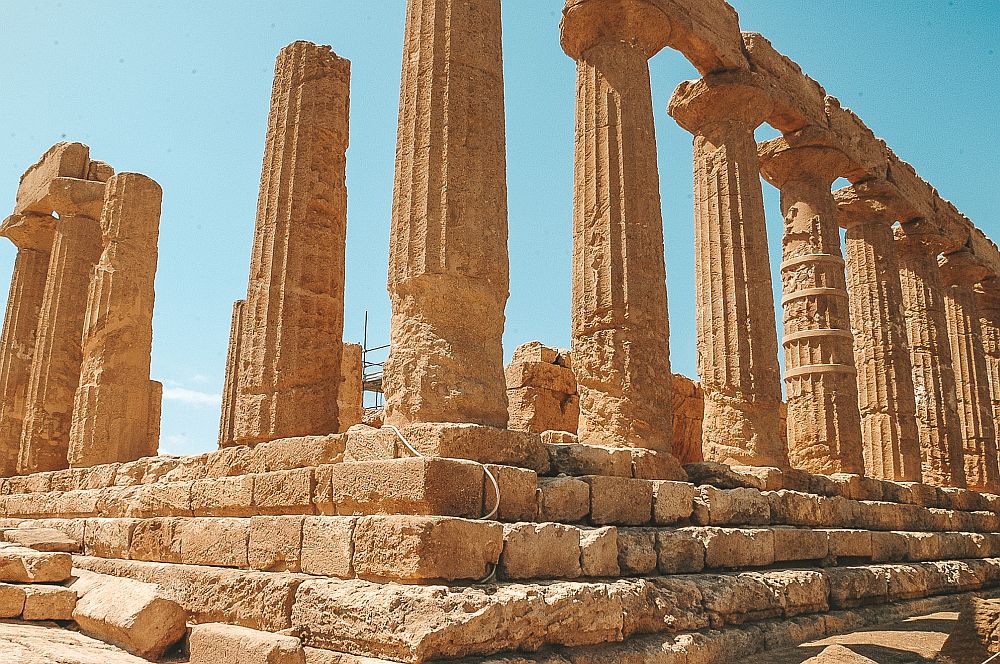
Why is the Archaelogical Area of Agrigento a UNESCO World Heritage site?
The collection of eight temples inside the Archaeological Area of Agrigento are considered to be some of the best-preserved Greek temples in the world. According to UNESCO’s description, “The temples in the area exemplify Greek architecture and are considered to be among the most extraordinary representations of Doric architecture in the world.”
The grandness of the temples (some rivalling even those in Greece) demonstrates the city’s former importance in the historic Greek colony. The fact that the temples remain mostly intact in their original form without reconstruction or being repurposed into buildings for later religions or cults, makes them a site of historical importance and authenticity as well as an extraordinary testament to the Greek colony and classical culture of Sicily.
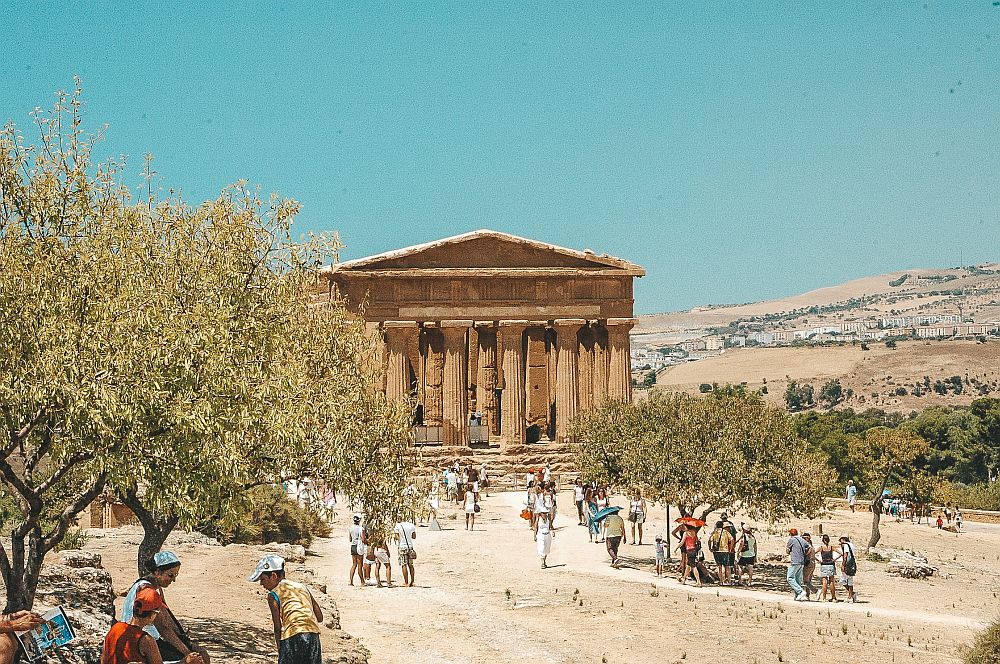
What can you expect on a visit to the Archaelogical Area of Agrigento?
The Archaeological Area of Agrigento’s Valley of the Temples covers some 1,300 hectares (3200 acres). The site is divided into two areas: the Valley of Temples and the Pietro Griffo Archeological Museum. Both are situated close together and can be visited during the same trip. Along with the temples, you can also explore the remnants of numerous statues, the tomb of Theron, gardens and sanctuaries. A complete visit will take anything from three to four hours with some medium-intensity walking (depending on whether you walk up or downhill).
Is the Archaeological Area of Agrigento worth visiting?
While the nearby town of Agrigento is nothing to shout about, the Archaeological Area is considered one of the most important historical sites in Sicily and is 100% worth a visit. Thankfully, it is possible to visit Agrigento as a day trip from Palermo or Siracusa without having to waste a night in Agrigento, for those short on time.
Compare prices on accommodations in Palermo, Siracusa and Agrigento.
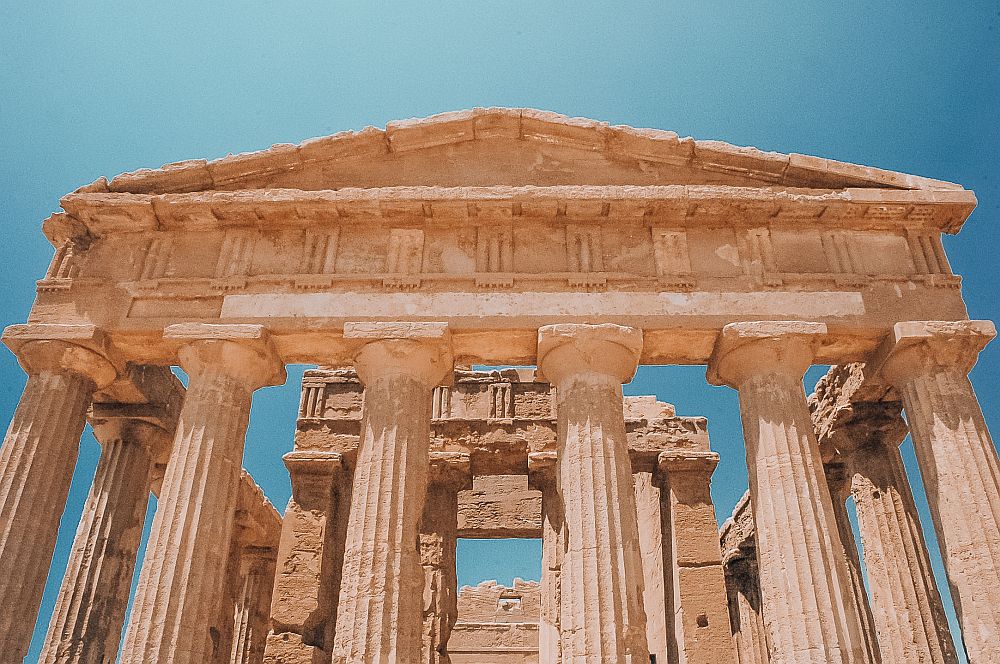
What sort of travellers would like the Archaeological Area of Agrigento?
Visitors young or old will enjoy exploring these ancient monuments. Visiting the temples with young children may prove a little more tricky, but those with older children will certainly enjoy a real-life history lesson. People particularly interested in the history should definitely make time for the museum.
Tips for visiting the Valley of the Temples
Sicily gets incredibly hot in the summer months between June and September and the Valley of the Temples offers little to no shade from the blazing sun. Sun hats, sun-screen and water bottles should be the highest priority when packing your backpack for the day, as well as decent walking shoes.
The Valley of the Temples can be visited as a day trip from Taormina, Catania and Palermo but be prepared for a long tiring day.
Those who struggle to walk or find the heat too unbearable can make use of the park’s shuttle service that runs between the two park entrances.
You can rent an audio guide from the ticket office for €5 per audio guide. A personal document (normally an ID card or drivers license) is taken as a deposit.
You may wish to combine your day with a trip to the Scala dei Turchi, a famous rocky cliff on the coast, which is located just a short 20 minutes’ drive away.
Young children are welcome to visit the Valley of the Temples but be mindful during the hot summer months. The visit requires a lot of walking and while the majority of the park is stroller friendly, the lack of shade and heat may hinder your plans to see the whole park in one visit.
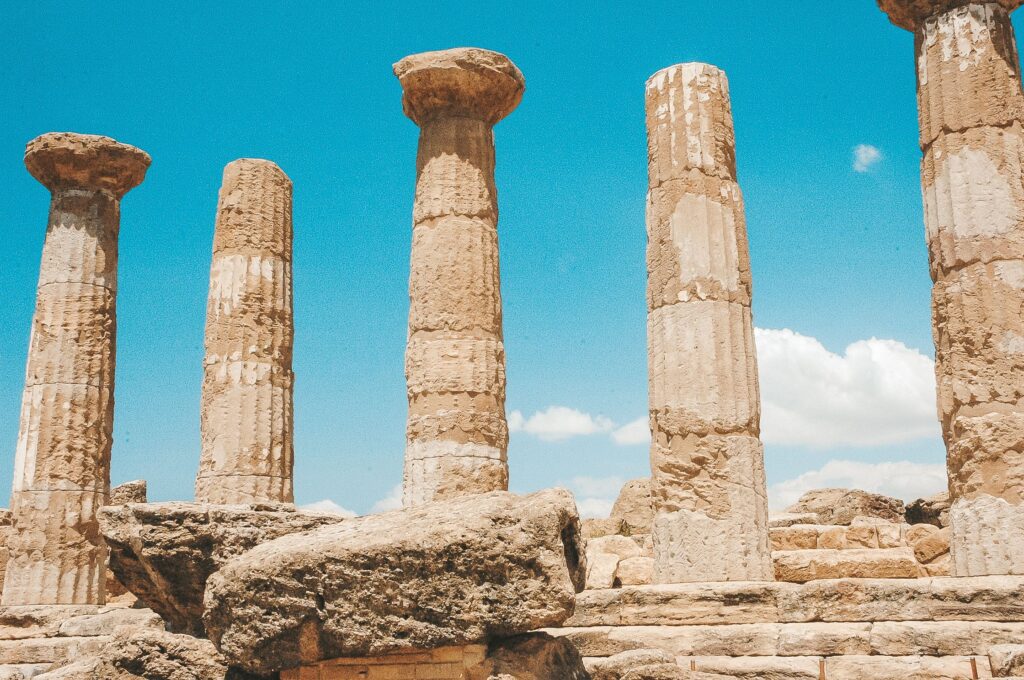
Where is the Valley of the Temples?
Address: 92100 Agrigento, Province of Agrigento, Italy
By Car: The Archaeological park is approximately a 2-hour drive from Palermo and Catania and 2 hours 30 minutes from Siracusa. Parking is available at the ticket office and park entrances. A small fee of €3 is payable on the spot for parking.
By public transport: You can take the train directly to Agrigento from Palermo (2 hours) and then a short bus ride or taxi from the train station to the park entrance. Unfortunately, bus or train connections from other cities are highly inconvenient and lengthy and cannot be used for day trip purposes.
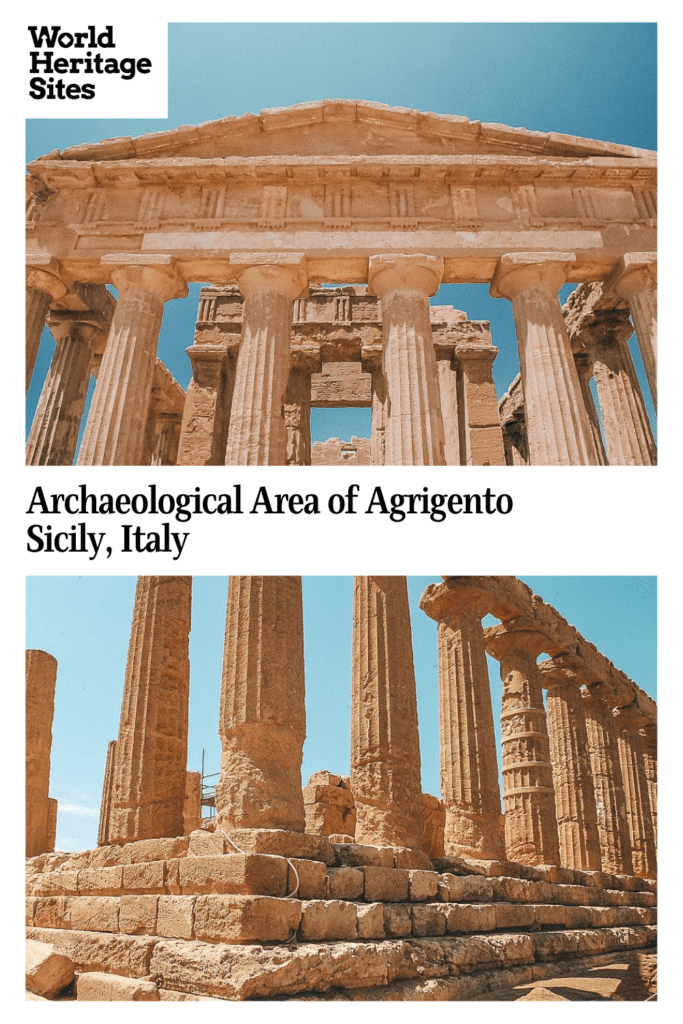
For more information about The Valley of the Temples, its opening hours and admission fees, see the park’s official website.
Have you been to the Archaeological Area of Agrigento? If so, do you have any additional information or advice about this UNESCO World Heritage site? Please add your comments below!

